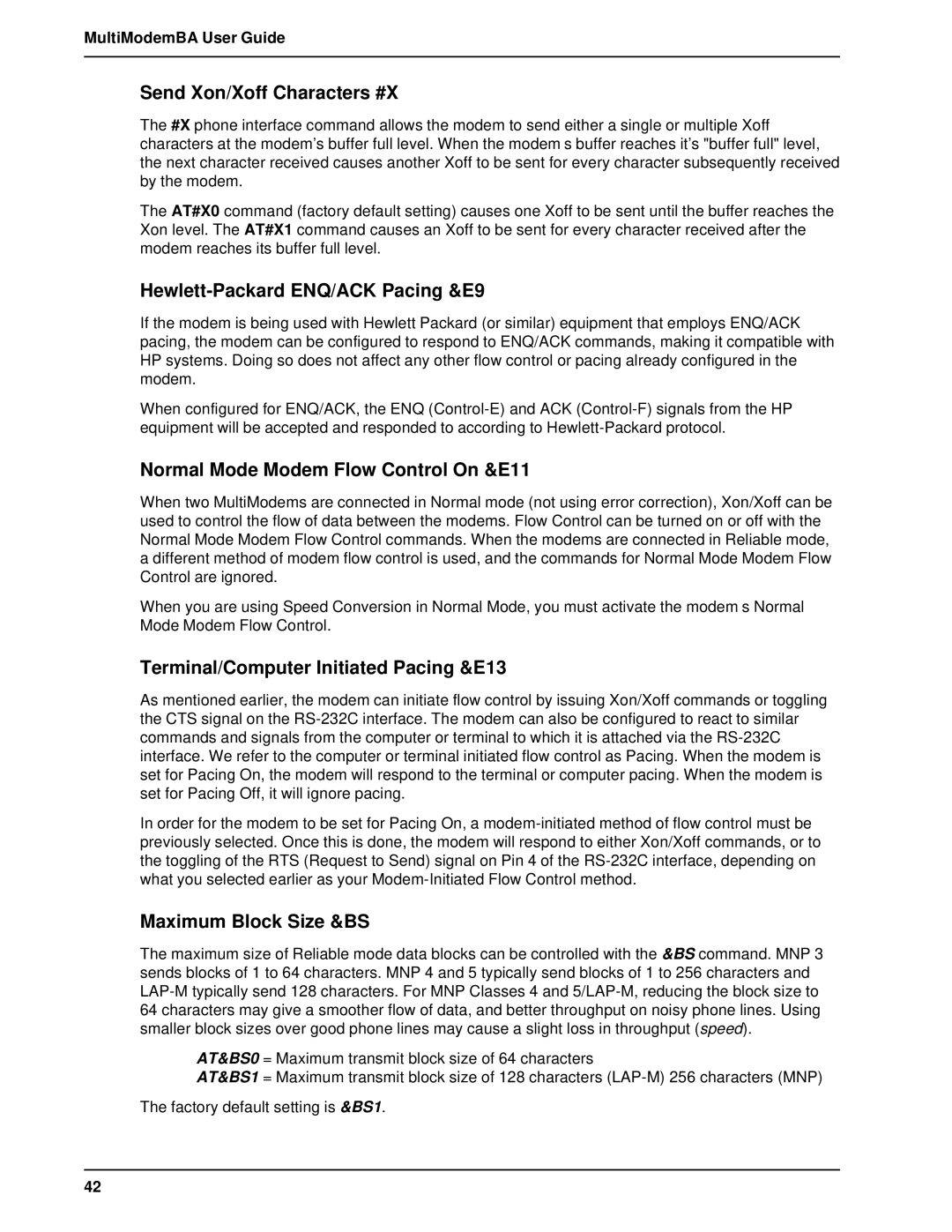
MultiModemBA User Guide
Send Xon/Xoff Characters #X
The #X phone interface command allows the modem to send either a single or multiple Xoff characters at the modem's buffer full level. When the modem’s buffer reaches it's "buffer full" level, the next character received causes another Xoff to be sent for every character subsequently received by the modem.
The AT#X0 command (factory default setting) causes one Xoff to be sent until the buffer reaches the Xon level. The AT#X1 command causes an Xoff to be sent for every character received after the modem reaches its buffer full level.
Hewlett-Packard ENQ/ACK Pacing &E9
If the modem is being used with Hewlett Packard (or similar) equipment that employs ENQ/ACK pacing, the modem can be configured to respond to ENQ/ACK commands, making it compatible with HP systems. Doing so does not affect any other flow control or pacing already configured in the modem.
When configured for ENQ/ACK, the ENQ
Normal Mode Modem Flow Control On &E11
When two MultiModems are connected in Normal mode (not using error correction), Xon/Xoff can be used to control the flow of data between the modems. Flow Control can be turned on or off with the Normal Mode Modem Flow Control commands. When the modems are connected in Reliable mode, a different method of modem flow control is used, and the commands for Normal Mode Modem Flow Control are ignored.
When you are using Speed Conversion in Normal Mode, you must activate the modem’s Normal Mode Modem Flow Control.
Terminal/Computer Initiated Pacing &E13
As mentioned earlier, the modem can initiate flow control by issuing Xon/Xoff commands or toggling the CTS signal on the
In order for the modem to be set for Pacing On, a
Maximum Block Size &BS
The maximum size of Reliable mode data blocks can be controlled with the &BS command. MNP 3 sends blocks of 1 to 64 characters. MNP 4 and 5 typically send blocks of 1 to 256 characters and
AT&BS0 = Maximum transmit block size of 64 characters
AT&BS1 = Maximum transmit block size of 128 characters
The factory default setting is &BS1.
42
